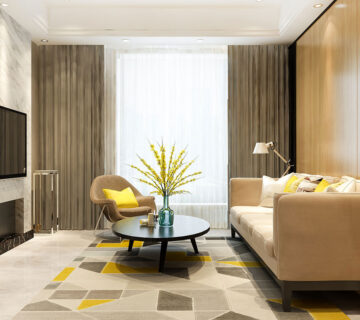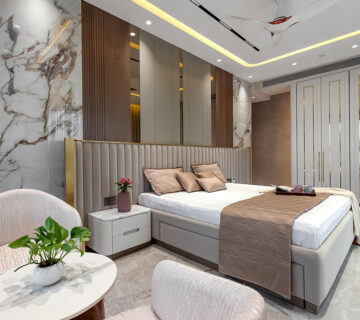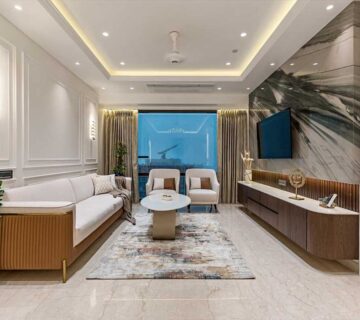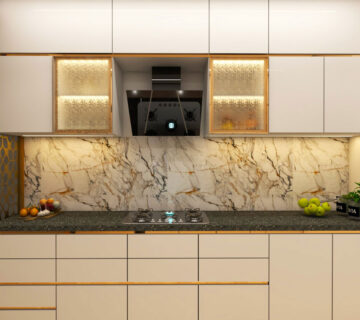Why Your Kid’s Bedroom Should Inspire Learning
As parents, our goal is to provide our children with the best opportunities to excel academically and express their creativity. One powerful but often neglected method is to transform their bedroom into an engaging learning space. Imagine a room that fuels their curiosity, inspires creativity, and makes learning a delightful adventure, right at home!
Creating an engaging environment goes beyond just aiding education; it also encourages kids to think for themselves, tackle problems, and unleash their creativity. By thoughtfully blending educational features with fun decor, you can design a space where your child can relax, discover, learn, and thrive.
In this blog post, we’re here to provide you with step-by-step tips, the latest design trends, and expert practices to help you create an interactive learning space that’s both functional and inspiring. Whether your child is a toddler, preschooler, or teenager, these ideas will assist you in designing a room that encourages lifelong learning and creativity.
Understanding the Concept of an Interactive Learning Space
An interactive learning environment goes beyond just being a study nook. It’s a dynamic space that blends fun with education. Unlike a typical bedroom that focuses mainly on comfort, this kind of environment sparks imagination, encourages problem-solving, and fosters creativity through engaging activities.
✅ Key Features of an Interactive Learning Space
- Educational Decor: World maps, alphabet charts, or mathematical tables.
- Hands-On Learning Tools: Whiteboards, chalkboards, and interactive wall decals.
- Creative Corners: Arts and crafts sections, musical instruments, or science experiment stations.
- Reading Nook: Cozy corner with bookshelves and comfortable seating.
- Technology Integration: Smart learning apps, interactive tables, or e-learning zones.
Importance & Benefits of a Learning-Friendly Bedroom
🎯 1. Boosts Cognitive Development
An interactive learning environment really boosts your child’s problem-solving skills, memory, and cognitive abilities. With fun decor and engaging tools, they can enhance their reasoning and analytical thinking in a way that’s both enjoyable and effective!
🌿 2. Encourages Creativity and Imagination
Creating a fun play corner filled with building blocks, art supplies, or DIY crafts really helps boost creative thinking. It ignites originality and inspires kids to dive into new ideas and explore their imaginations!
🧠 3. Promotes Independent Learning
When children have access to educational resources in their own bedrooms, they are more likely to engage in self-directed study. This instills confidence and encourages individual inquiry.
📚 4. Makes Learning Fun
Blending play with education makes learning enjoyable. Incorporating puzzles, games, and interactive walls makes your child excited about exploring new concepts.
🏠 5. Enhances Productivity at Home
A well-organized learning space reduces distractions and encourages focused study sessions, which is especially beneficial for remote learning or homeschooling.
How to Design an Interactive Learning Space – Step-by-Step
🔨 Step 1: Choose an Educational Theme
Thematic bedrooms create a cohesive learning experience. Pick a theme that aligns with your child’s interests.
- For Science Lovers: Space-themed decor with planetary charts, glow-in-the-dark stars, and a telescope.
- For Nature Enthusiasts: Jungle-themed room with animal decals, nature books, and a mini plant-growing corner.
- For Art Lovers: Creative studio setup with drawing tables, colors, and whiteboards.
🛋️ Step 2: Optimize the Layout for Functionality
- Zoning: Divide the room into specific learning, play, and relaxation zones.
- Flexible Furniture: Use modular and multipurpose furniture. For instance, a bed with built-in storage or a study table with adjustable height.
- Clear Walkways: Ensure ample space for free movement to avoid a cluttered environment.
🎨 Step 3: Incorporate Educational Wall Decor
Walls can become learning hubs with interactive decor:
- Chalkboard Paint: Allows kids to draw, write, and solve problems directly on the wall.
- Magnetic Boards: Perfect for spelling games, flashcards, or math puzzles.
- World Map Wall Art: Encourage geographical exploration by marking countries and cities.
💡 Step 4: Introduce Hands-On Learning Tools
Make learning tactile and fun by adding:
- DIY Science Kits: Mini experiment setups.
- Art & Craft Stations: Stocked with paper, paints, and crafting tools.
- Puzzles & Brain Games: To promote problem-solving skills.
📚 Step 5: Create a Cozy Reading Nook
Design a dedicated corner with:
- Comfortable seating (bean bags, cushions).
- Accessible bookshelf with age-appropriate books.
- Soft lighting for a cozy, inviting feel.
🔌 Step 6: Use Technology for Interactive Learning
Incorporate tech tools that enhance learning:
- Smart Boards: Digital boards with interactive educational apps.
- E-Readers or Tablets: For educational content and e-books.
- Augmented Reality (AR) learning apps.
Trends & Statistics: Modern Kid’s Bedroom Design
- 📊 82% of parents believe that a learning-oriented bedroom promotes better study habits at home.
- 🎨 Color psychology plays a key role—calming shades like blue or green boost focus, while pops of yellow or orange spark creativity.
- 💻 Tech-integrated learning spaces are gaining popularity, with 60% of parents investing in smart home learning devices.
- 🌿 Nature-inspired elements (plant corners, animal motifs) are on-trend, fostering curiosity and love for nature.
Common Mistakes to Avoid
🚫 1. Overcrowding the Space:
When your bedroom is filled with too many things, it can really take away from its functionality and fun. So, try to keep it tidy and open!
🚫 2. Choosing Distracting Colors:
Steer clear of super bright or bold colors that might overwhelm the eyes. Instead, go for soft, muted shades and sprinkle in some colorful accents for a nice touch.
🚫 3. Ignoring Safety:
Ensure that the furniture and learning tools are child-safe. Smooth edges, non-toxic materials, and age-appropriate accessories are essential.
🚫 4. Skipping Ergonomic Furniture:
Incorrect chair height or desk positioning can cause posture problems. Choose ergonomic seating and adjustable desks.
Pro Tips & Best Practices
✅ 1. Encourage Creativity with Custom Art Corners:
Let kids display their artwork or science projects on gallery walls, fostering a sense of pride and ownership.
✅ 2. Add Multi-Sensory Learning Tools:
Incorporate textured walls, sensory boards, and musical instruments to stimulate different senses.
✅ 3. Opt for Smart Storage Solutions:
Use labeled bins, floating shelves, and under-bed storage to keep the space neat and organized.
✅ 4. Include Interactive Apps and Gadgets:
Introduce educational games and AR tools that promote interactive learning in a fun way.
FAQs
🔹 Q1. What is the best color for a learning-focused kids’ bedroom?
Soft shades like sky blue, pastel green, and beige create a calming effect, while accents of yellow or orange enhance creativity.
🔹 Q2. How do I make a small bedroom interactive?
Use multi-functional furniture, wall-mounted boards, and vertical storage solutions to maximize space.
🔹 Q3. Are tech-based learning tools necessary?
While not essential, age-appropriate tech like educational apps, smart boards, and AR tools can enhance interactive learning.
Conclusion: Create a Space Where Your Child Thrives
Designing an interactive learning space in your child’s bedroom is more than just about aesthetics—it’s about building an environment that fosters creativity, learning, and growth. By incorporating educational decor, functional zones, and engaging tools, you can turn an ordinary room into a space that inspires curiosity and lifelong learning.
✨ Start transforming your child’s bedroom today into a fun and educational haven, where learning feels like play and imagination knows no limits.
🚀 Looking for expert guidance to design your kid’s bedroom? Contact JRT Interior Designers today and create a learning-friendly space that inspires creativity and growth!







